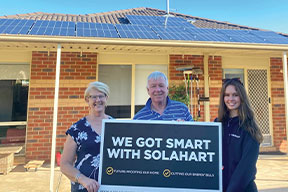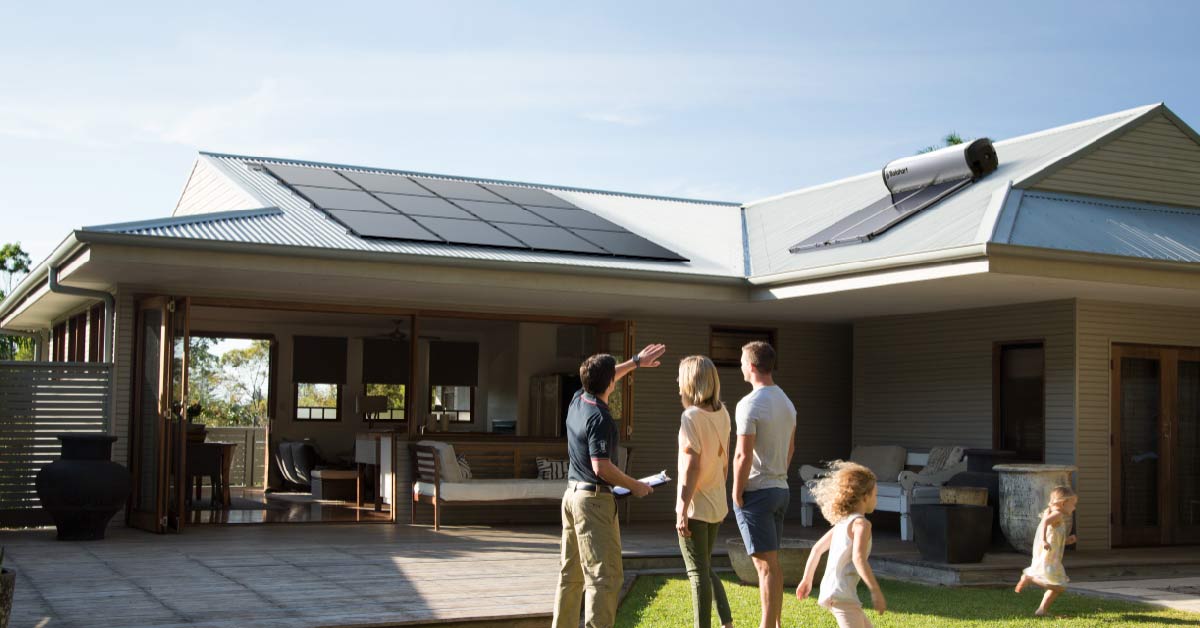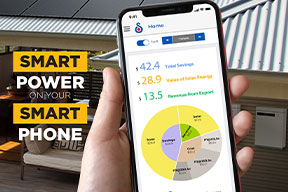Contact Information
- Solahart Wagga Wagga
- 4A Norton St, Wagga Wagga NSW 2650
- 1300 362 821

The Australian Energy Market Operator (AEMO), in its National Electricity Market (NEM) snapshot, said wholesale costs soared 141 per cent in the first quarter of 2022 compared with the same period last year.
This announcement is particularly worrying for households without solar, who are set to experience energy bill shock, with a significant increase in wholesale electricity prices being passed on by retailers to consumers.
“Increases in electricity prices create even more problems for consumers who rely solely on the grid for their energy,” says Stephen Cranch, General Manager of Solahart Australia.”These inflationary pressures have resulted in energy retailers passing cost increases on to households, contributing to an even higher cost of living.”
There are two key reasons why electricity prices are rising:
The rise in electricity prices varies from state to state. The Australian Energy Regulator (AER) covers New South Wales, South Australia and south-east Queensland, with different states and territories managing their situation in their own way.
Below are details on the increase in electricity prices in each state since July 1:
Earlier this year, the Western Australia government announced a 2.5% rise from July 1.
The ACT has declined 1.25%, or $23 annually.
If you are solely relying on the grid to power your home, switching to a natural energy source like the sun is a smart choice. Over 3 million households in Australia have chosen to install solar on their rooftops to reduce their grid-energy consumption, with our nation leading the world in solar uptake, per capita.
“We have a fantastic opportunity here in Australia,” Stephen said. “We can lead the way in transitioning effectively to green energy, and the world is watching how we deal with a high influx of renewables onto the grid due to our significant uptake of solar.”
Here are 4 smart ways you can protect yourself from rising energy costs:
A typical family with a 6kW system can save up to $1,500 on their annual energy bills with solar power. Also, research shows that, on average, households with solar power have energy bills that are up 20 per cent lower than those without.¹
“The bigger the system, the better for you as we move to electrify everything in the future,” said Stephen. “For example, if you’re thinking of getting an electric vehicle (EV) in the next five years, it makes sense to get a larger system now so you can draw on the sun’s natural energy to power your car and the rest of your household appliances.”

Installing solar hot water is a smart choice as water heating typically makes up around 25% of an Australian household’s energy consumption. Compared to an electric water heater, a solar hot water system could help you save up to 65% of your water-heating energy consumption.²
Installing both solar power and solar hot water helps reduce your reliance on fossil fuels in favour of one of the most abundant, consistent sources of energy we have available: the Australian sun. Both systems work hand-in-hand to deliver maximum savings for you and your family.

While Australia has the highest solar uptake in the world, there remains an untapped opportunity for many homeowners to store excess solar power for later use. If not used immediately, a large percentage of the energy produced by your solar panels may be sent back to the grid.
Thus, there is a shift towards total home energy solutions to use energy free from the sun at all times of the day. This also helps the grid transition from coal-fired power to renewables so it can effectively handle more solar, wind, and energy storage.
“The grid is struggling to deal with the increase in solar as it is designed to supply power to consumers. With the shift towards renewables, the grid now has to deal with excess solar in the middle of the day when the demand is low,” says Stephen. “Consumers are paid a feed-in tariff for any excess solar energy. However, these feed-in tariffs have been reducing due to the surge in excess solar.”
To solve this problem, consumers can store this excess energy for later use rather than send it back to the grid. In conjunction with your solar system, a home battery solution is another smart way to offset rising electricity costs as you can maximise solar energy usage and minimise reliance on the grid.

“As we become more electrified in the future, particularly with the uptake of EVs, it is a smart decision to use energy from the sun and reduce our grid energy consumption and energy costs,” said Stephen.
There is also an opportunity to use excess solar power to heat water. This type of storage solution can help you significantly reduce your hot water energy consumption, as you can draw on natural energy even when the sun isn’t shining.
Designed and built in Australia, Solahart PowerStore captures excess power from solar panels and uses it to heat water. Like a battery, it stores energy (in the form of hot water), only it’s a lot more affordable.
Also read: Find out more about Solahart PowerStore
For even bigger savings, tap into Solahart’s Home Energy Management Solution with a Solahart Energy Management Unit. This intelligent communications hub monitors the solar power you generate, tracks the energy you consume, and automatically shifts connected appliances away from expensive peak times, such as a hot water system like a Solahart PowerStore.
A Solahart Energy Management Unit can be added to any solar system. You can:

With Australia ranking among the most expensive nations to live in the world, switching to a total home energy solution is a smart choice to keep more money in your pocket.
For more information or to set up a free, in-home consultation, contact Solahart today and your local Dealer can identify a solution that is right for you.
Solahart Solar-Ready water heater is a smart choice because it provides an immediate solution to your hot water needs right now and also gives you the flexibility to upgrade and save on your energy costs in the future.
Whether you need a simple solution to get back into hot water quickly, a solar water heater from day one, or the option to upgrade to energy-saving solar in the future, you’re in control.
And no matter which option you choose, enjoy the extra peace of mind with a 10-year cylinder warranty.
1: Solahart Warranty Details: 10/3/2 warranty; 10 year cylinder and collector supply, 3 year cylinder and collector labour, 2 year parts supply including labour; applies to a single family domestic dwelling only. All other applications have a 3/1/1/1 warranty; 3 year cylinder and collector supply, 1 year parts supply, 1 year labour.
2: Energy savings of up to 65% shown is based on Australian Government approved TRNSYS simulation modelling of a Solahart 302L and using a medium load in Zone 3 and apply when replacing an electric water heater. Any savings will vary depending upon your location, type of Solahart system installed, orientation and inclination of the solar collectors, type of water heater being replaced, hot water consumption and fuel tariff. Maximum financial savings off your hot water bill are achievable when replacing an electric water heater on continuous tariff. Refer to solahart.com.au for further information.
3: For a Solahart Solar Hot Water system, each STC represents 1 megawatt-hour (MWh) of electricity displaced over a 10 year period. The number of STC’s which may be created for the installation of an eligible solar water heater varies with the size and model of the solar water heater and the region (or zone) in which the unit is installed. The value of an STC is not fixed and varies depending on market factors.
Rated 4.7 from 8,200+ customer reviews
Looking for something else? Search our site here.
At Solahart, we’re proud to be leading Australia’s solar charge. Helping smart Aussies make a real difference to the planet, reducing their reliance on the grid, cutting their energy bills, and connecting them to their smart energy future.
Since 1953, we’ve been the trusted name in Australian solar, installing over a million solar hot water systems in over 70 countries, and over 1 million solar power panels in Australia.